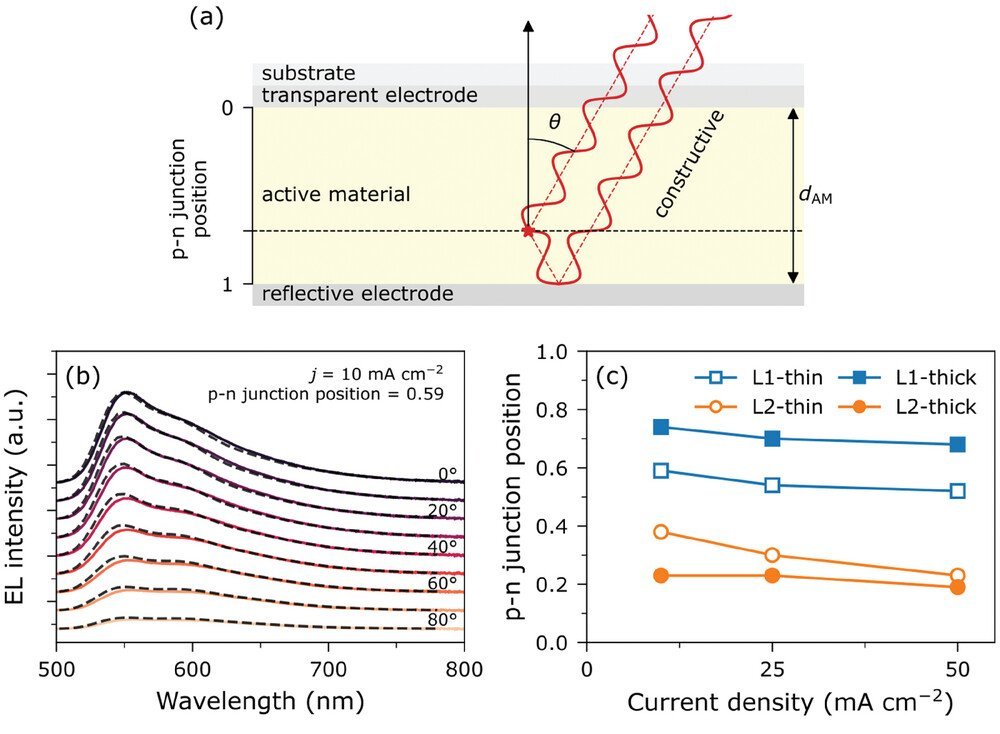Efficiency Roll-Off in Light-Emitting Electrochemical Cells
X. Zhang, J. Ràfols-Ribé, J. Mindemark, S. Tang, M. Lindh, E. Gracia-Espino, C. Larsen, L. Edman, Adv. Mater. 2024, 2310156.
https://doi.org/10.1002/adma.202310156
The paper by Zhang et al. investigates the decrease in emission efficiency at higher currents in light-emitting electrochemical cells (LECs). It focuses on identifying and quantifying the major factors causing this efficiency drop, such as outcoupling efficiency and exciton quenching. The study presents a method to analyze these factors, contributing to the design of more efficient, high-luminance LEC devices.
How Setfos was used
Setfos was used for modeling in the study. This software simulated the structure of the light-emitting electrochemical cell (LEC) device, including various components like the glass substrate, ITO anode, active material, and Al cathode. The software modeled excitons as emissive electrical dipoles. It was particularly used for simulating the electroluminescence (EL) spectra and EL intensity to determine the position of the emissive p-n junction in the device, using a delta function exciton distribution in a transparent, non-doped active material with the wavelength-dependent refractive index of pristine Super Yellow

